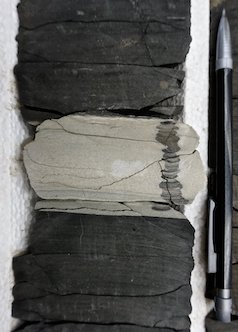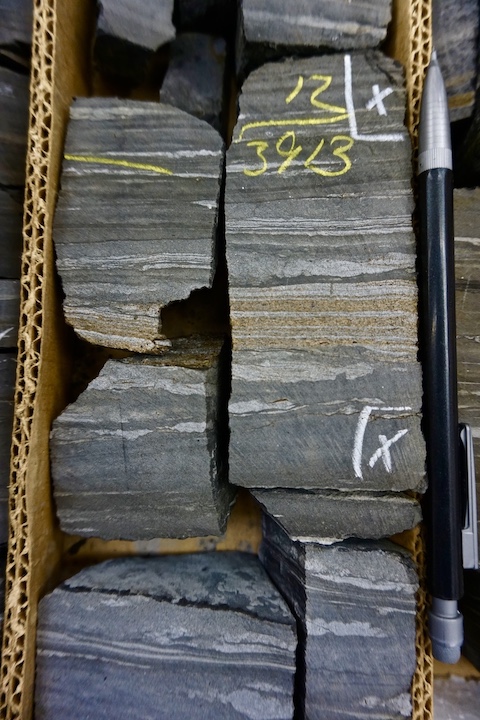
How to describe and interpret mudrock (shale) core
Course Details
This course is conducted at the United States Geological Survey Core Research Center (USGS-CRC) in Lakewood, Colorado, USA – one of the largest laboratories in the world where core is collected and stored. Not only is there a large room where several hundred meters of core can be displayed at a time but there is also a classroom where lectures can be delivered.
Many factors affects the volumetric and flow capacity of shales including (i) organic content – type, maturity, distribution (ii) mineralogic composition – ductile vs. brittle thus affecting the geomechanical properties and (iii) current day stress fields – imperative for decisions including orientation of horizontal wells and completion design. The principal application of Sequence Stratigraphy and Mechanical Stratigraphy is that it can provide an understanding and explain the systematic variation of the above mentioned factors Sequence Stratigraphy provides a framework for understanding the depositional processes which manifests itself as lithofacies packages and associated important stratal surfaces. Mechanical Stratigraphy provides the opportunity to account for post depositional alterations including natural fractures and stress changes. In this course we will combine these principals to enable an appreciation of the non-homogeneous and non-blanket nature of shales and their imperative influence on factors including hydraulic fracturing – height and geometry, lateral placement and completion design decisions.
In this course we will teach how to tease out the details needed for you to develop a through understanding of your reservoir.
Who Should Attend
• Geologists • Geophysicists • Petrophysicists • Engineers
This course is meant for all who are working on the exploration and development of shale plays in the US and overseas.
Need more information?
Course Outline
Day 1
9:00-10:00 am – HSE briefing, introductions and lecture on mudrock classification (Ali)
10:10 am – 12:00 pm – Lectures on Sequence Stratigraphy, Mechanical Stratigraphy of Shales and their application – Bridging the gap between micro scale (thin-sections and SEM) to macro scale decisions (horizontal well placement, number of stages, fluid/proppant type).
Sedimentology, Sequence Stratigraphy and Mechanical Stratigraphy exercises on core and thin-sections from the Mancos, Mowry and Niobrara.

Day 2
9:00 – 10:00 am – Sequence Stratigraphy of clastic vs carbonate mudrocks
10:10 am – 12:00 pm – Lectures on Micro Scale studies including Ion-milled (Argon ion) SEM its unique importance in Shale Oil Characterization
1:00 pm – 4:00 pm – Core description Exercises

This course can be taken in Denver at the USGS upon request OR can be arranged at a core storage facility and on a shale of your choice. If you would like to arrange this workshop on your core then we kindly ask that you provide us with logs, core photos, and thin-sections at least 3 months in advance.


